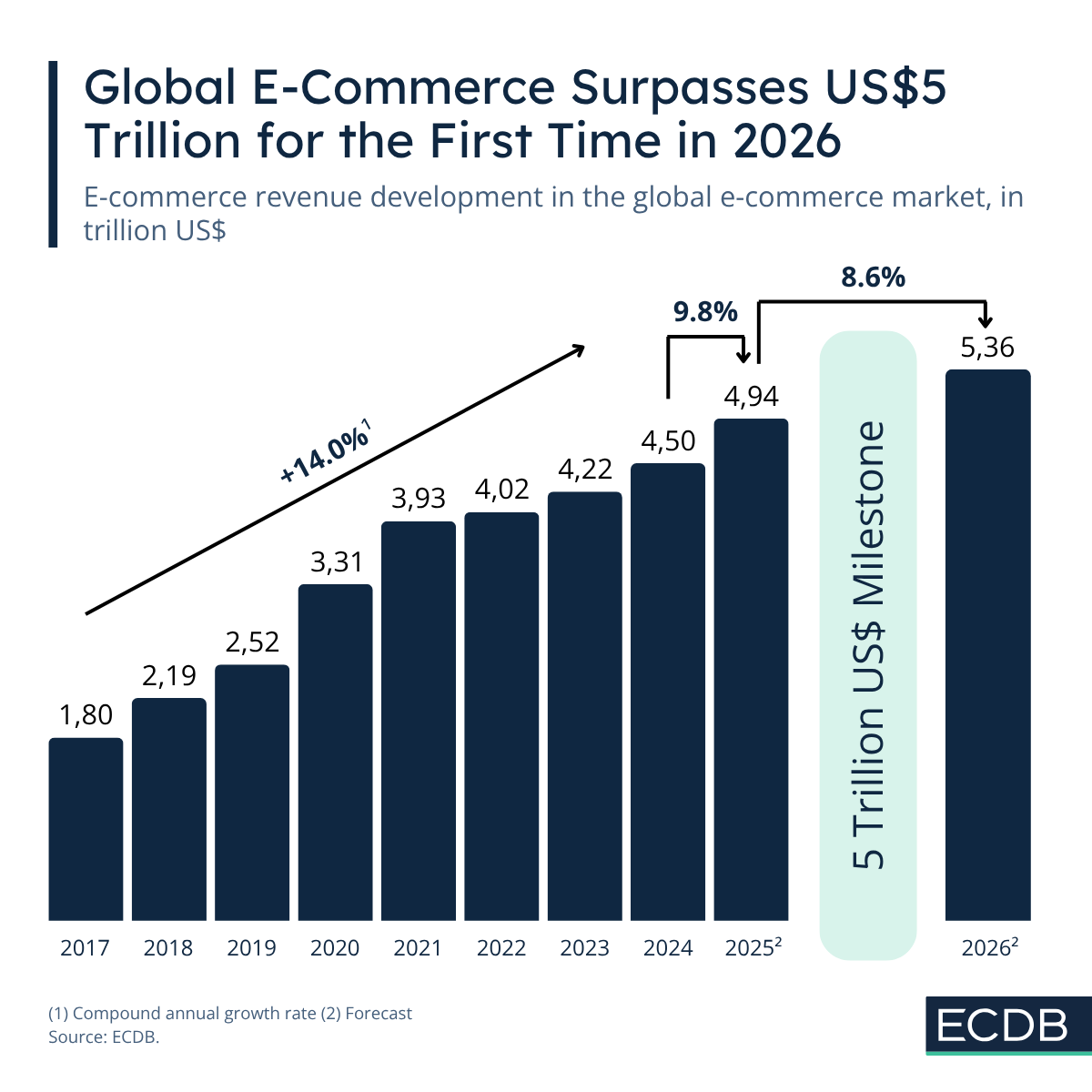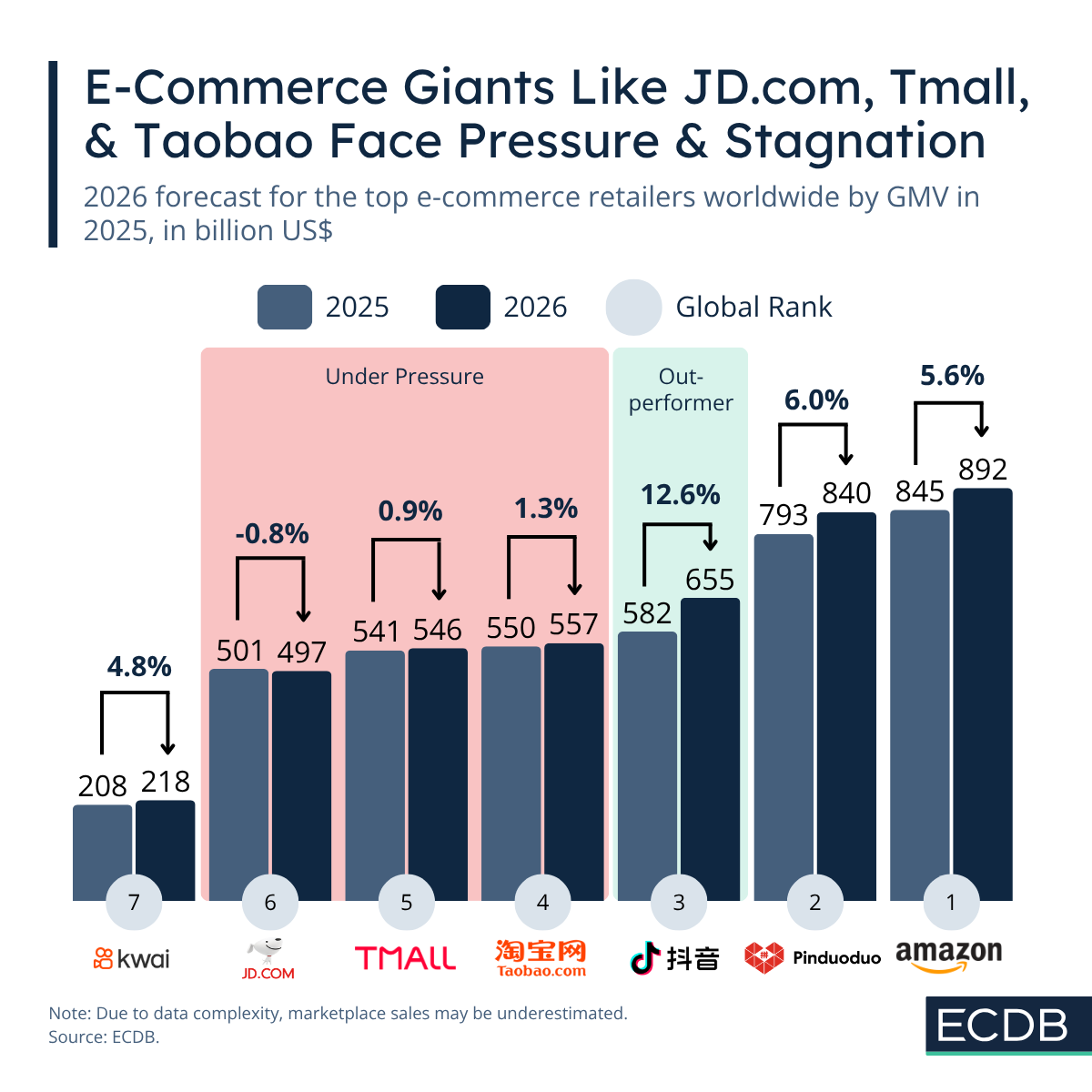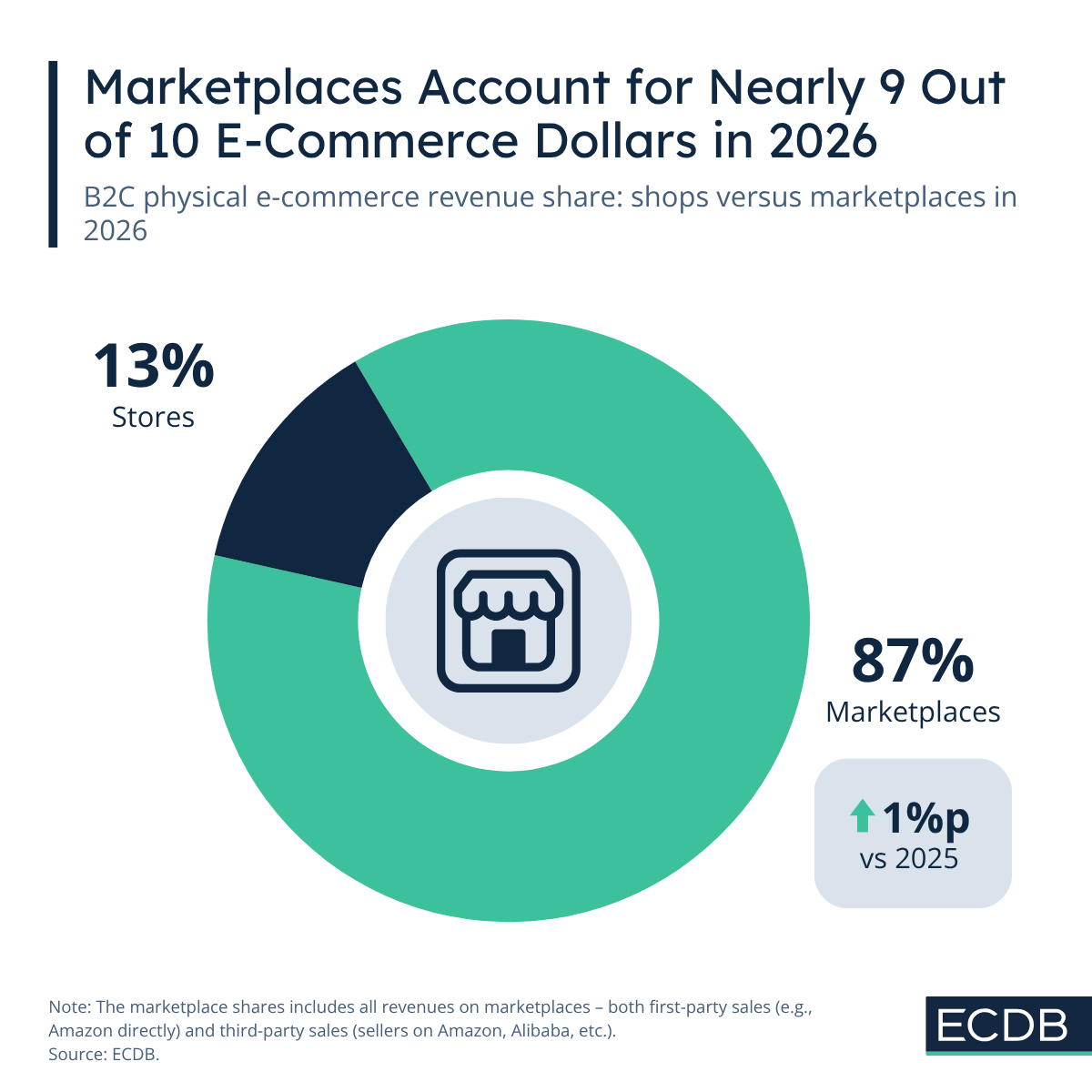Article in a Nutshell:
Global e-commerce exceeds US$5 trillion in 2026.
Latin America leads all regions with 12.4% growth; GSA trails at 4.6%.
Grocery grows 14.4%, surpassing a 10% market share.
Multiple top global retailers stagnate or decline—while TikTok Shop jumps nearly 60%.
Marketplaces are responsible for 87% of global online spending.
Global E-Commerce Passes the US$5 Trillion Mark for the First Time
After years of steady expansion, 2026 marks a historic moment: global e-commerce revenue surpasses the US$5 trillion threshold. While growth has moderated since the pandemic highs, the market continues to expand at a healthy pace—driven by rising adoption, improved logistics, and the continued shift from offline to online across emerging markets.

Latin America Leads Global Growth, While GSA Lags Behind
2026 highlights a clear divergence across regions. Latin America emerges as the world’s fastest-growing e-commerce region, significantly outperforming the global average.
Meanwhile, the GSA region (Germany, Switzerland, Austria) registers the weakest growth among major economic blocs.

Grocery Surges 14.4% and Crosses 10% Share for the First Time
Grocery continues to be one of the strongest growth drivers globally. In 2026, it surpasses a 10% share of global e-commerce revenue—an important structural shift that reflects broader adoption, improved delivery reliability, and new quick-commerce hybrid models.

TikTok Shop Jumps Nearly 60%, While Temu and Shein Hit a Reality Check
TikTok Shop emerges as one of the fastest-growing global eCommerce players, expanding its GMV by nearly 60% in 2026.
The platform’s hybrid model—fuelled by algorithmic discovery, livestream selling and aggressive merchant incentives—continues to outperform expectations.
Meanwhile, Shein and Temu encounter cooling momentum. Growth slows significantly, signaling a shift from hyper-expansion to more sustainable, moderated trajectories.

Several Global Retail Giants Face Pressure and Stagnation
Amid slowing global growth, multiple top retailers experience stagnation or even mild decline.
JD.com contracts. Tmall and Taobao grow only marginally. Pinduoduo and Amazon continue expanding, though at moderate rates. TikTok Shop stands out as the clear outperformer.

Marketplaces Strengthen Their Grip: 87% of All eCommerce Dollars in 2026
The marketplace model continues its global dominance.
By 2026, 87% of all B2C physical e-commerce spending flows through marketplaces—up 1 percentage point from 2025.
This reflects expanding seller ecosystems, platform-native advertising, and the continued rise of social-commerce-driven marketplaces.

Looking Ahead: A Market Moving Into Its Next Chapter
The global e-commerce landscape in 2026 tells a story of scale—and divergence.
Milestones are reached, but growth is shifting toward regions and categories that blend affordability, convenience and digital maturity. Platforms like TikTok Shop disrupt traditional players, while some of the world’s largest retailers face stagnation in a cooling competitive environment.
As the world moves into 2027, the defining question becomes how quickly retailers can adapt to uneven regional dynamics, platform concentration and evolving consumer behavior.
Those who invest in agility, cross-border capability, marketplace excellence and new commerce experiences will be best positioned to lead the next phase of global digital retail.












